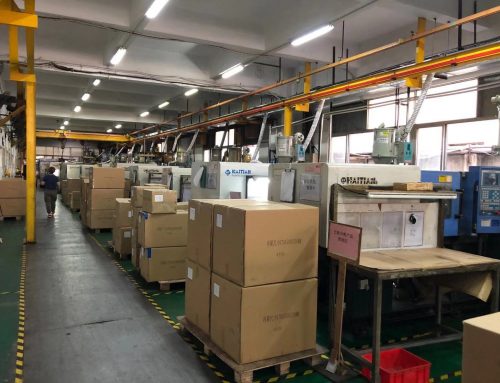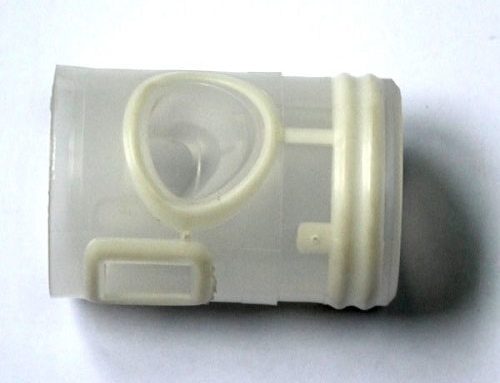Due to long production cycle, large investment, and high manufacturing precision, die cast aluminium alloy molding has a high cost, so it is desirable that mold has a high service life. However, due to a series of internal and external factors such as materials and machining, custom molding is prematurely invalidated and scrapped, resulting in great waste.
Failure modes of die cast aluminium alloy molding mainly include: sharp corners, cracks at the corners, splitting, hot cracks (cracks), wear and erosion. Main causes of failure of aluminum alloy mould are: defects in material itself, processing, use, maintenance, and heat treatment.
1 defects in material itself
It is well known that conditions of use of die casting molds are extremely poor. Taking an die cast aluminium alloy molding as an example, melting point of aluminum is 580-740C, and when used, temperature of aluminum liquid is controlled at 650-720C. Die-casting without preheating mold, surface temperature of cavity rises from room temperature to liquid temperature, and surface of cavity is subjected to great tensile stress. When top part is opened, cavity surface is subjected to extremely large compressive stress. After thousands of times of die casting, cracks and other defects are formed on surface of custom molding.
It can be seen that conditions of die casting use are quenching. Mold material should be hot work die steel with high thermal fatigue resistance, fracture toughness and high thermal stability. H13 (4Cr5MoV1Si) is a widely used material. According to reports, 80% of foreign cavities use H13. Nowadays 3Cr2W8V is still widely used for China mold maker, but 3Cr2W8VT has poor performance, poor thermal conductivity and high linear expansion coefficient. A large thermal stress is generated in the work, which causes mold to crack or even rupture, and is easy to decarburize when heated, and reduces anti-wear performance of mold, so it is a eliminated steel. Maraging steel is suitable for molds that are resistant to heat cracking and that do not require high wear resistance and corrosion resistance. Heat-resistant alloys such as tungsten and molybdenum are limited to small inlays with hot cracking and corrosion. Although these alloys are brittle and notched sensitive, they have advantage of good thermal conductivity and thicker water channels that require cooling. Die cast aluminium alloy molding have good adaptability. Therefore under reasonable heat treatment and production management, H13 still has satisfactory performance.
Material of aluminum alloy mould should meet design requirements in any aspect to ensure that aluminum alloy mould reaches design service life under its normal use conditions. Therefore before putting into production, a series of inspections should be carried out on materials to prevent early scrapping of molds and waste of processing costs. Commonly used inspection methods include macroscopic corrosion inspection, metallographic examination, and ultrasonic inspection.
(1) Macroscopic corrosion inspection. Mainly check porosity, hemiplegia, cracks, cracks, non-metallic inclusions, and hammer cracks and joints on surface.
(2) Metallographic examination. Mainly check segregation, distribution state, crystal grain size and intergranular inclusions of carbides on grain boundary of material.
(3) Ultrasound examination. Mainly check defects and size inside material.
2 processing, use, repair and maintenance of die-casting mold
Problems that should be paid attention to in design of die cast aluminium alloy molding have been detailed in mold design manual, but maximum speed should not exceed 100m/s when determining injection speed. Too high speed cause corrosion of mold and increased deposits on cavity and core; however, too low causes a defect in casting. Therefore, for magnesium, aluminum, zinc, corresponding aluminum injection molds speed is 27, 18, 12m / s, maximum injection speed of cast aluminum should not exceed 53m / s, average aluminum injection molds speed is 43m / s.
Thicker stencils cannot be layered to ensure their thickness during processing. Because thickness of steel plate is 1 times and amount of bending deformation is reduced by 85%, laminate can only act as a superposition. Bending deformation of two plates of same thickness as veneer is four times that of veneer. In addition, when processing cooling water channel, special attention should be paid to ensuring concentricity in two-sided processing. If corners of head are not concentric with each other, corners of joint will crack during use. Surface of cooling system should be smooth, preferably without machining marks.
EDM is more and more widely used in mold cavity machining, but surface of cavity after processing has a hardened layer. This is due to carburizing and quenching of mold surface during processing. Thickness of hardened layer is determined by current intensity and frequency during processing, deeper during roughing, and shallower during finishing. Regardless of depth, mold surface has great stress. If hardened layer is not removed or stress is removed, cracks, pitting and cracking will occur on surface of custom molding during use. To eliminate hardened layer or to remove stress, it is possible: 1 to remove hardened layer with oil stone or grinding; 2 to lower stress below tempering temperature without lowering hardness, which can greatly reduce surface stress of cavity.
Casting process should be strictly controlled during use of custom molding. Within scope of process, minimize casting temperature of aluminum liquid, injection speed, and increase preheating temperature of mold. Preheating temperature of die cast aluminium alloy molding is increased from 100 to 130C to 180 to 200C, and mold life can be greatly improved.
Welding is a common method in mold repair. Before welding, model of welded steel should be mastered, and surface defects should be eliminated by machining or grinding. Welding surface must be clean and dried. Electrode used should be consistent with die steel composition and must be clean and dried. Custom molding is preheated together with electrode (H13 is 450C). After surface and core temperature are the same, welding is repaired under protective gas. During welding process, when temperature is lower than 260C, it is necessary to reheat. After welding, when mold is cooled to touch by hand, heated to 475C, and kept at 25 mm / h. Finally, it is completely cooled in the still air, and then cavity is trimmed and finished. Heating and tempering after welding of mold is an important part of welding, that is eliminating welding stress and tempering thin layer under welded layer which is heated and quenched during welding.
After custom molding has been used for a period of time, there are deposits on cavity and core due to high injection speed and long-term use. These deposits are formed by combination of release agent, coolant impurity, a small amount of die-cast metal at high temperature and pressure. These deposits are quite hard, adhere strongly to core and cavity surfaces which are difficult to remove. It cannot be removed by heat with a torch, which may result in local hot spots or decarburization points on surface of mold, which may become source of thermal cracking. Grinding or mechanical removal should be used, but other profiles should not be damaged, resulting in dimensional changes.
Regular maintenance can keep mold in good condition. After new mold is tested, whether mold is qualified or not, stress relief and tempering should be carried out without cooling mold to room temperature. When new mold is used to design life of 1/6 to 1/8, that is, die cast aluminium alloy molding 10000 times, magnesium and zinc die cast mould 5000 times, copper die cast mould 800 times, mold cavity and mold base should be tempering at 450 to 480C, polishing and nitriding cavity to eliminate internal stress and slight cracks on cavity surface. Same maintenance will be carried out every 12,000 to 15,000 times in the future. When mold is used for 50,000 times, it can be serviced every 25,000 to 30,000 times. With above method, speed and time of cracking due to thermal stress can be significantly slowed down.
In the case of severe erosion and cracking, surface of mold can be nitrided to improve hardness and wear resistance of mold surface. However, hardness of nitriding matrix should be 35-43HRC. When temperature is lower than 35HRC, nitrided layer cannot be firmly bonded to substrate. After a period of use, large piece will fall off. It will easily cause crack on convex surface of cavity surface if above 43HRC. When nitriding, thickness of nitriding layer should not exceed 0.15mm, or it will fall off at parting surface and sharp corners.
3 heat treatment
Correctness of heat treatment is directly related to service life of mold. Due to incorrect heat treatment process and process specification, residual stress caused by deformation, cracking, and heat treatment of mold causes mold to fail in use, accounting for half of mold failure.
Die cast mould cavities are made of high-quality alloy steel. These materials are expensive, and processing cost is high. If quality of heat treatment is not high or quality of heat treatment is not high, scrapping or life expectancy will not meet design requirements, and economic loss will be great. Therefore, following points should be noted during heat treatment:
(1) Forging is subjected to spheroidizing annealing when it is not cooled to room temperature.
(2) After roughing and finishing, add quenching and tempering treatment. In order to prevent hardness from being too high and processing is difficult, hardness is limited to 25-32HRC, and stress relief tempering is arranged before finishing.
(3) Pay attention to the critical points Ac1 and AC3 of steel and holding time during quenching to prevent austenite roughening. When tempering, it is kept at 20mm/h, and number of tempering is generally 3 times. When there is nitriding, third tempering can be omitted.
(4) Decarburization and carbonation should be paid attention on the surface of the cavity when process heat treatment. Decarburization will record rapid damage and high-density cracks; carbonation will reduce thermal fatigue resistance.
(5) When nitriding, it should be noted that there should be no oil on nitrided surface. Cleaned surface is not allowed to be touched by hand. Gloves should be worn to prevent nitrided surface from being contaminated with oil and causing uneven nitride layer.
(6) Between two heat treatment processes, when previous temperature drops to hand, lower channel is not allowed to cool to room temperature.




